WHAT ARE THE SOCIAL PROJECTS?
At Metàfora, we understand art therapy training as a transformative tool, not only for those who undertake it, but also for the individuals they will accompany in their therapeutic journeys.
Social Projects – Art Therapy in Action is the social pillar of Metàfora’s art therapy training. It is not a subject; it is an institutional commitment we have upheld for over two decades.
Through clinical placements, our Master’s in Art Therapy students implement art therapy projects in educational, healthcare and community settings that serve individuals in vulnerable situations who would otherwise have no access to such resources.
They integrate art therapy into established multidisciplinary teams, providing a space that complements the care offered by these institutions. Art therapy sessions become places of expression, listening and care, where art emerges as a powerful instrument for resilience, creating a profound impact.
THREE PERSPECTIVES, ONE MISSION
SOCIAL
ACTION
From at-risk children to older adults in residential homes, from oncology patients to women who have suffered violence and people with disabilities. Our students have facilitated art therapy sessions in each of these contexts with an ethical, rigorous approach tailored to every reality.
Often this is a person’s first therapeutic contact, opening processes of emotional repair, identity reconstruction and the re-signification of difficult experiences.
CLINICAL
INTERNSHIP
For our students, the practicum is the turning point between training and professional practice. Direct contact with real cases is where vocation is awakened, learning is validated and the theory taught in class is put into action.
Each student therefore receives weekly clinical supervision and support in designing a project tailored to the centre, the users she will work with and her own professional approach.
PARTNER
INSTITUTIONS
Why incorporate art therapy into a hospital, a school or a care home? Because art therapy opens doors where words cannot reach. It helps people express emotions, rebuild personal narratives and restore their connection to the symbolic.
By welcoming a Metàfora student, the centre gains an innovative, personalised therapeutic resource at no financial cost. In return, it benefits from a carefully managed, supervised process designed to generate a positive impact on the people it serves.
CLINICAL INTERNSHIP
Upon admission to the Master’s in Art Therapy, students already possess the theoretical knowledge needed to deliver art therapy sessions as trainees, having previously and successfully completed the Postgraduate Diploma in Art Therapy.
To make this possible, it is essential that our students receive thorough clinical supervision from experienced art therapists.
Therefore, the internship lasts from October to June, in line with the academic calendar, and includes weekly supervision sessions provided by Metàfora.
During the internship, students spend between five and eight hours per week at a partner centre offering art therapy sessions.
By the end of the master’s programme, they will have completed a total of 700 practicum hours, 265 of which involve direct contact with service users, while the remainder is dedicated to case and session preparation, note-taking and participation in the centre’s team meetings.
The internship hour count meets the requirements set by leading professional art therapy associations for practising the profession.
FREQUENTLY ASKED QUESTIONS ABOUT THE MASTER’S ART THERAPY PLACEMENT
Can I do the internship outside Spain?
Yes. If you are taking the master’s online or live outside Spain, you may carry out your internship in your country of residence. The centre must, however, meet certain requirements, such as having a qualified professional team able to give you the necessary support.
Where is the clinical placement carried out?
The clinical placement takes place in healthcare, educational, social or cultural centres; for example, schools, shelters, prisons, hospitals, non-profit associations, therapy centres, care homes or cultural projects.
Does Metàfora assign the centre or can I propose one?
If you live in Barcelona or in a city where we already have agreements with one or several institutions, we will assign you a centre. If we do not yet have an agreement with a centre in your area, we will help you find one. Should it be necessary to look for a new centre, you may propose one and we will evaluate whether it meets the programme’s pedagogical and ethical requirements.
Must the centre already offer art therapy services?
No, it is not necessary. Many of the centres where students undertake their internship do not have a pre-existing art therapy service. In such cases, the student can present a project tailored to the centre’s needs and, if required, introduce the profession to those who are unfamiliar with it.
How many practicum hours do I have to complete?
By the end of the master’s you will have completed a total of 700 internship hours, broken down into 430 hours of direct client contact and centre liaison plus about 270 hours of study and research at home. In the first year of the master’s this equals roughly 8 hours per week, and in the second year about 12 hours per week.
Can I combine the practicum with a job or other duties?
Many students work or have family responsibilities, so you can arrange the practicum hours with the placement centre in whatever way suits you both. The only requirement is that they fall between 8 a.m. and 6 p.m., the period when centres are normally operating.
Is supervision required at the placement centre?
Clinical supervision at the placement centre is not required; you will receive this support from Metàfora as part of the academic programme. The supervision sessions are held weekly and are led by professional art therapists.
How are the clinical placements assessed?
The assessment is qualitative and based on attendance, engagement in the process, and participation in supervision sessions. It also considers your personal and professional growth in relation to the art therapist role over the course.
What if I can’t start the practicum at the beginning of the course or can’t complete it?
If, over the two academic years, you do not manage to accumulate the required practicum hours, you will have the option of undertaking an additional practicum period for an extra fee.
PARTNER INSTITUTIONS
Since the launch of the Master’s in Art Therapy in 2000, Metàfora has partnered with more than 500 centres that welcome our students to implement art therapy. Rooted in Barcelona, this network now reaches all parts of the world.
Partner centres fall into six main fields: education, healthcare, social welfare, risk of exclusion, disability and geriatrics. Among them are schools, shelters, prisons, hospitals, non-profit associations, therapy centres, care homes and cultural projects.
The aim of these collaborations is to promote social action through learning: students analyse how they can contribute to the well-being of the people served by each centre through an art therapy project.
To this end, they first devote time to observing and understanding users’ specific needs, ensuring that the project aligns with those needs as well as with the centre’s care or educational objectives.
TESTIMONIALS FROM PLACEMENT CENTRES
Discover what it’s like to implement art therapy through Metàfora’s Master’s in Art Therapy students in three of our partner centres: the Catalan Association for Parkinson’s Disease (ACAP), a school for children with special educational needs (Escola Rel) and a non-profit social initiative cooperative (DAPSI). These testimonials showcase the educational value of professional placements and the impact of art therapy across diverse care settings.
ESCOLA REL (BARCELONA)
A therapeutic-educational school for children and young people aged 6-21 who need an adapted environment, providing individualised support that fosters autonomy and well-being in an inclusive, respectful atmosphere.
ACAP (BARCELONA)
A non-profit founded in 1985 to offer care, support and advice to people with Parkinson’s and their families. Declared of Public Benefit, ACAP promotes specialised therapies, activities and meeting spaces that improve quality of life, autonomy and physical and emotional well-being.
DAPSI (SANT CUGAT)
DAPSI Sant Cugat is a non-profit cooperative supporting the development and well-being of young children and their families. Since 1988, it has provided early care (CDIAP) for children aged 0–6 with or at risk of developmental issues, offering diagnosis, therapy, and family support in coordination with local services.
NETWORK OF PARTNER INSTITUTIONS THROUGHOUT OUR HISTORY
Over the years Metàfora has built partnerships with many centres and institutions. The map on the page shows all current and past collaborations.
WHO CAN BENEFIT FROM ART THERAPY?
This profession can be applied in many settings: education, healthcare, social-exclusion risk, social action, disability and geriatrics. So it can reach every population without limits of age or physical, psychological or cultural condition.
To decide whether someone might benefit from art therapy as a therapeutic resource, it helps to identify criteria that set it apart from other approaches. One key indicator is difficulty with verbal expression, because the emphasis in art therapy is on the creative process rather than on words.
Such difficulty may stem from under-developed verbal language, language barriers or a life circumstance that carries a heavy emotional bury.
Art therapy is also well suited to people who have experienced trauma, who need to make sense of a particular experience, or who simply feel more at ease with support delivered through symbolic language.
ARE YOU PART OF AN INSTITUTION AND INTERESTED IN COLLABORATING WITH METÀFORA?
ABOUT METÀFORA
Training at Metàfora covers a wide range of art therapy approaches and techniques, giving students both a broad and in-depth view of the discipline. Our teaching staff consists of highly qualified professionals with solid, long-standing experience, ensuring an education of outstanding quality.
Our location in Barcelona adds further value to the learning experience. The city’s vibrant artistic and cultural scene offers an ideal context for anyone wishing to immerse themselves in the world of art therapy. This environment, together with our innovative outlook and our commitment to students’ well-being, makes Metàfora a benchmark in art therapy training, providing the resources and knowledge needed to transform lives through art.






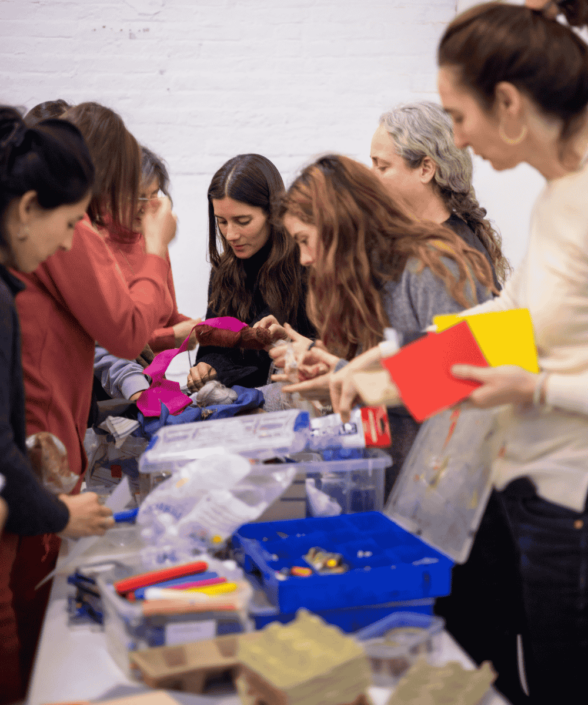
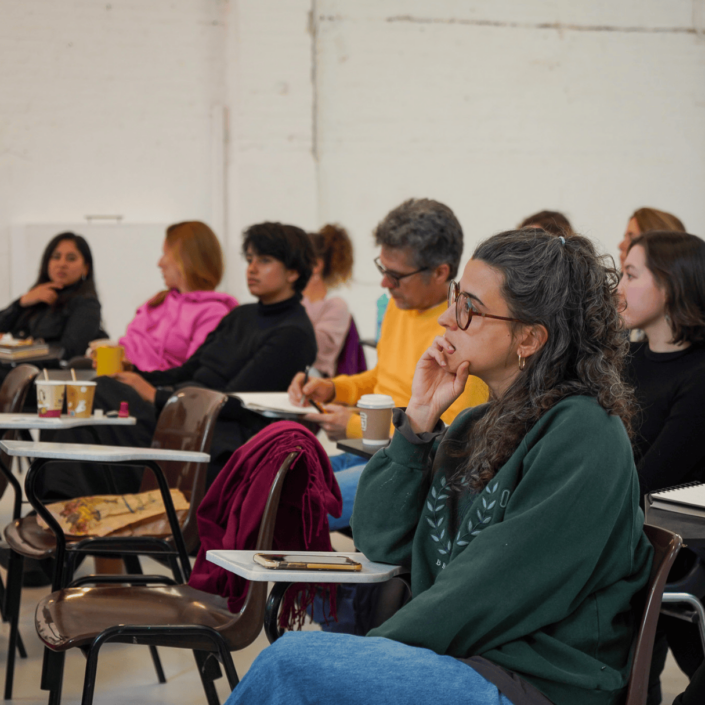
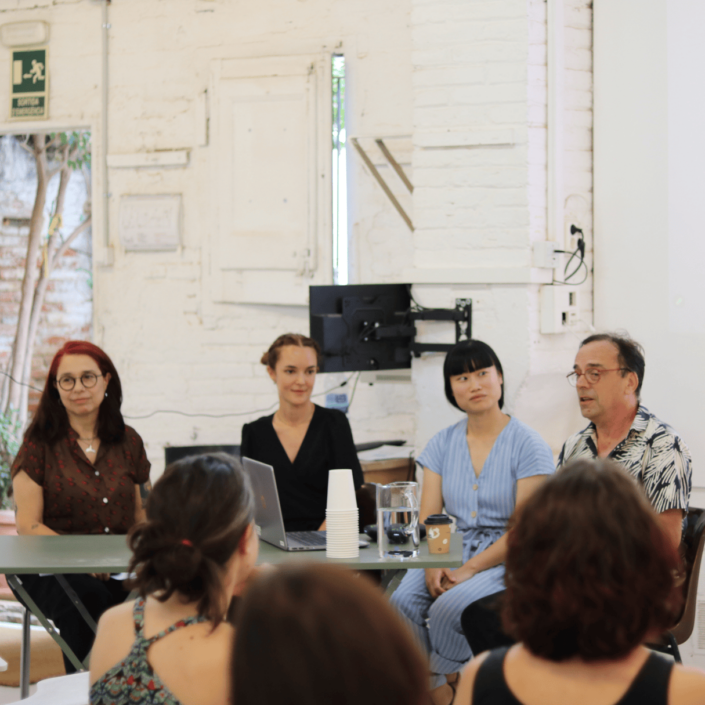
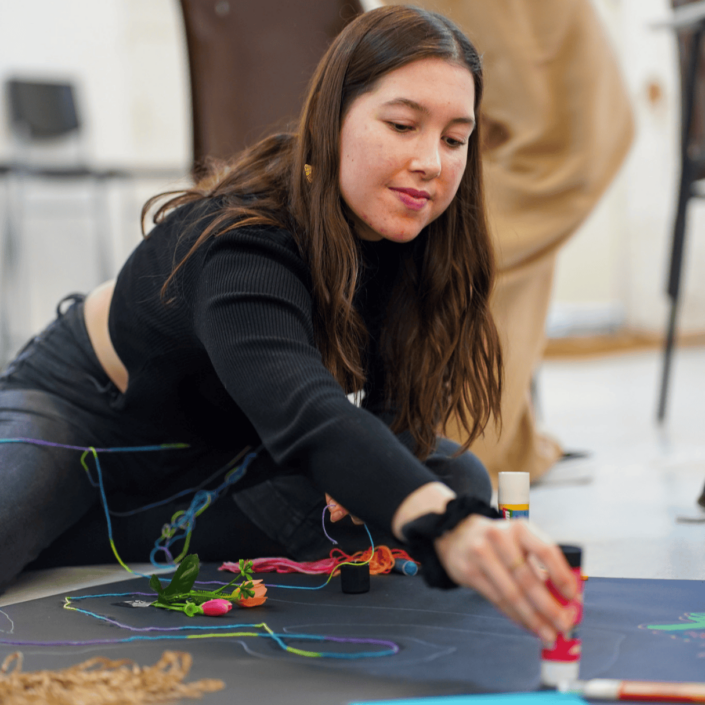
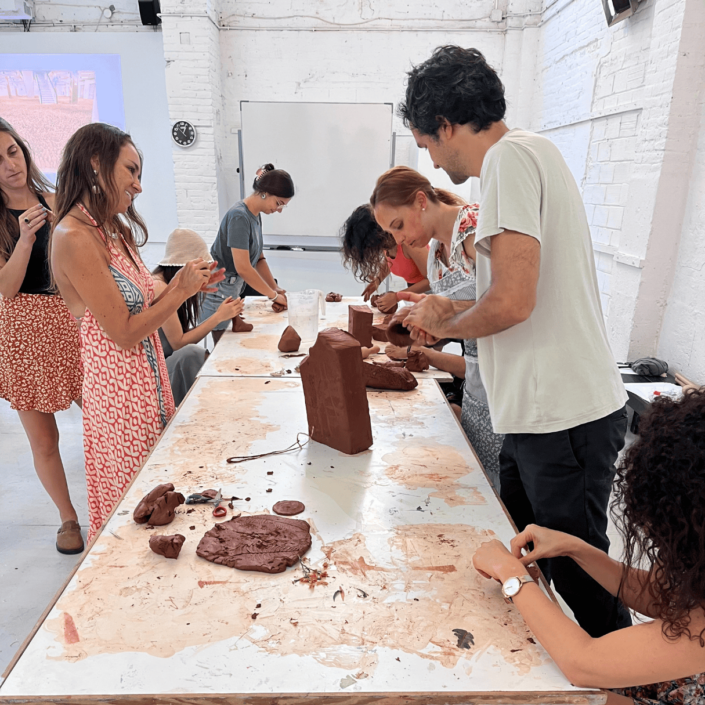
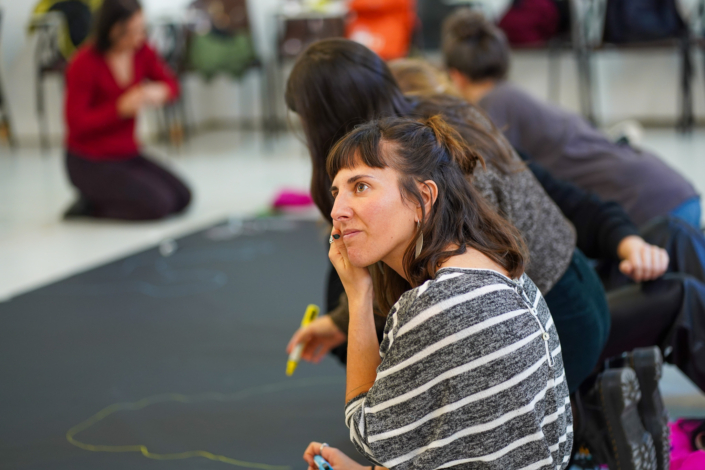
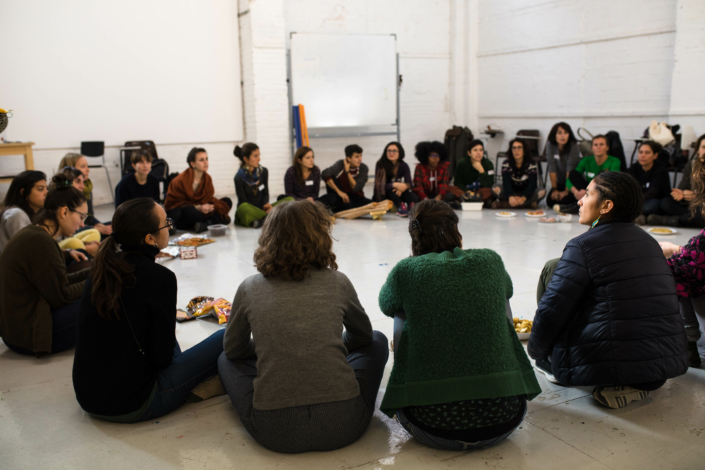
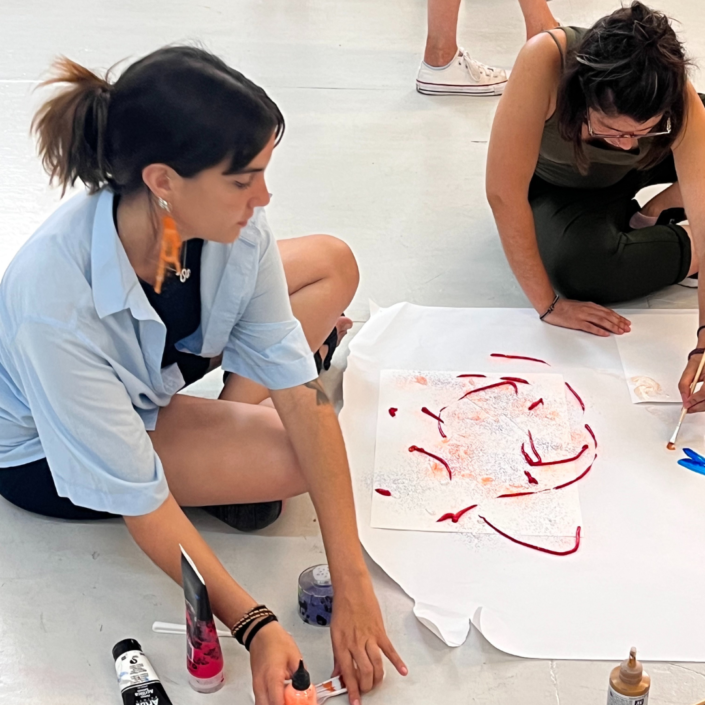


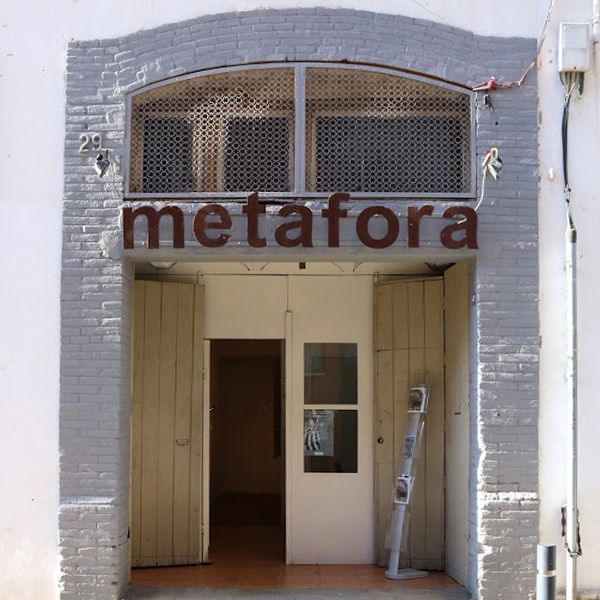

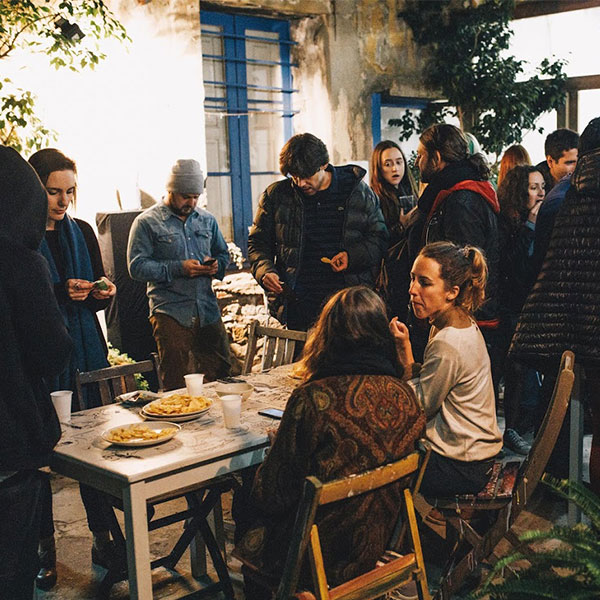

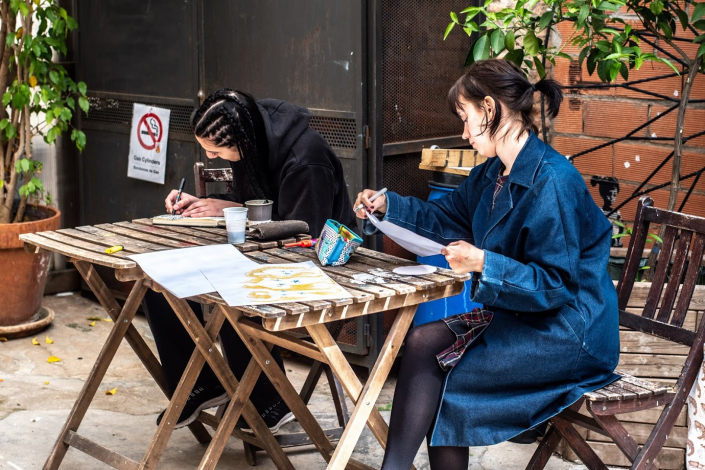
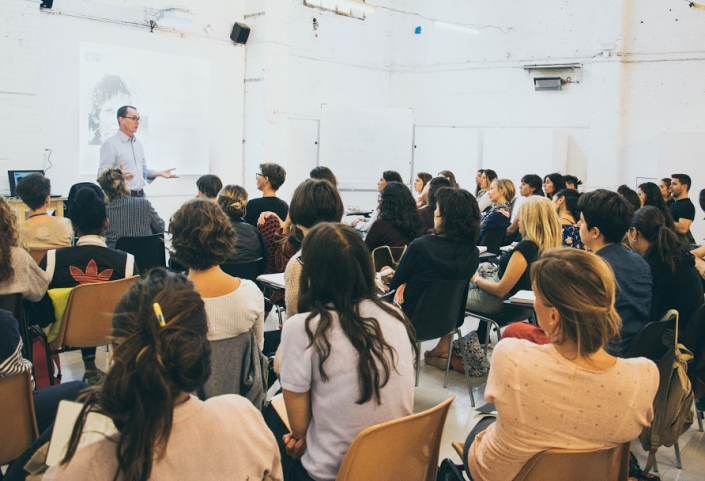



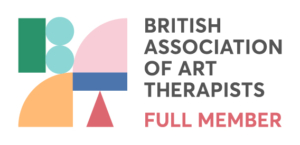
SOCIAL ACTION
A key element of the practicum projects carried out by Master’s students is bringing this service to vulnerable individuals, communities or groups who—due to economic or systemic barriers—cannot access it.
In countries where art therapy is still awaiting public-health recognition, this is especially significant.
To date, more than 4,700 users have received therapeutic support free of charge thanks to our students’ placements, either individually or in groups.
For many of them, the space offered has brought a significant change to their lives, enabling them to voice difficult experiences, weave those experiences into their life narrative, and feel supported through a safe therapeutic bond.
KEY FIGURES
MASTER’S STUDENTS SINCE 2000
PARTNER CENTRES
SINCE THE BEGINNING
PEOPLE BENEFITED
FROM ART THERAPY